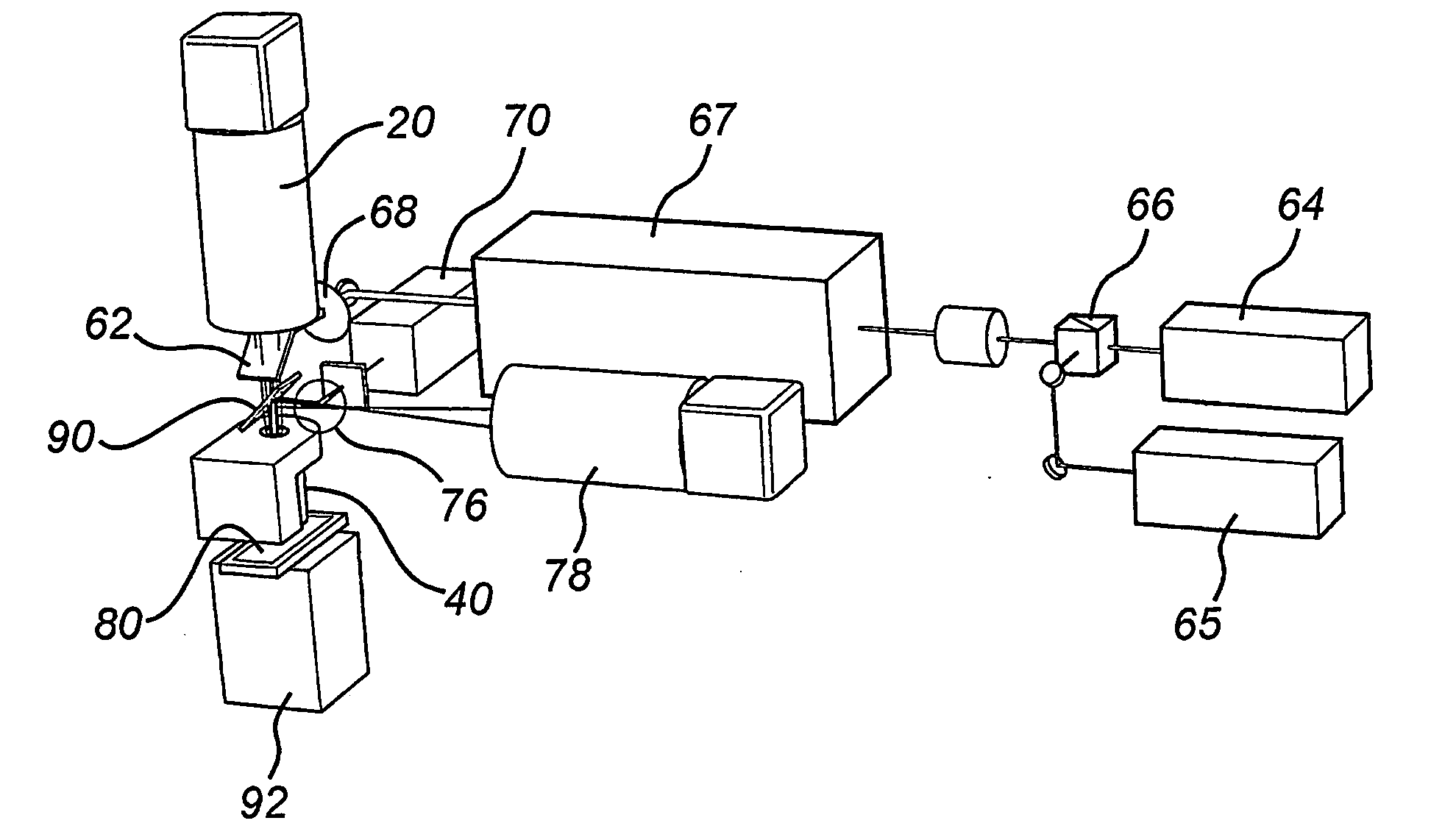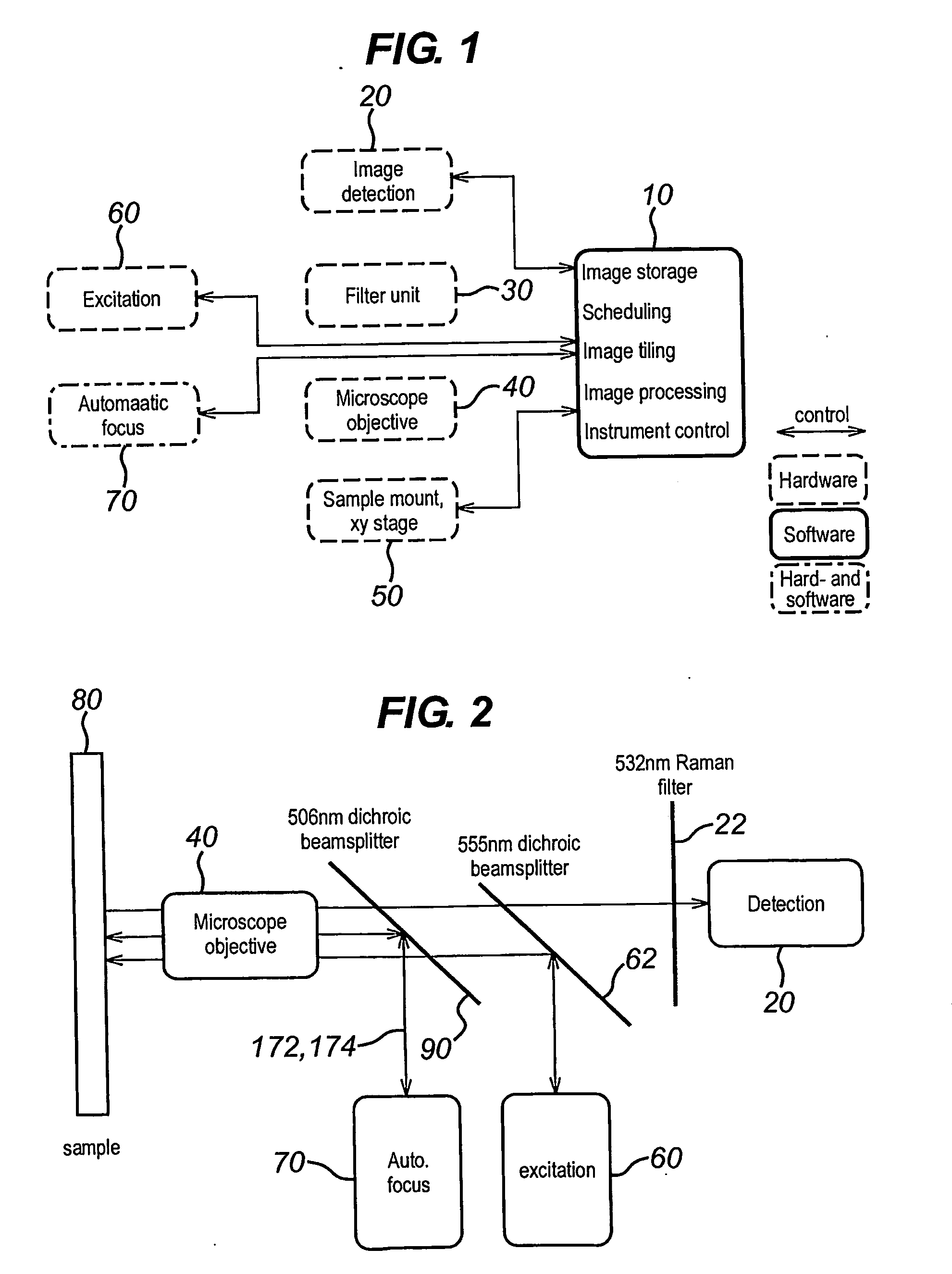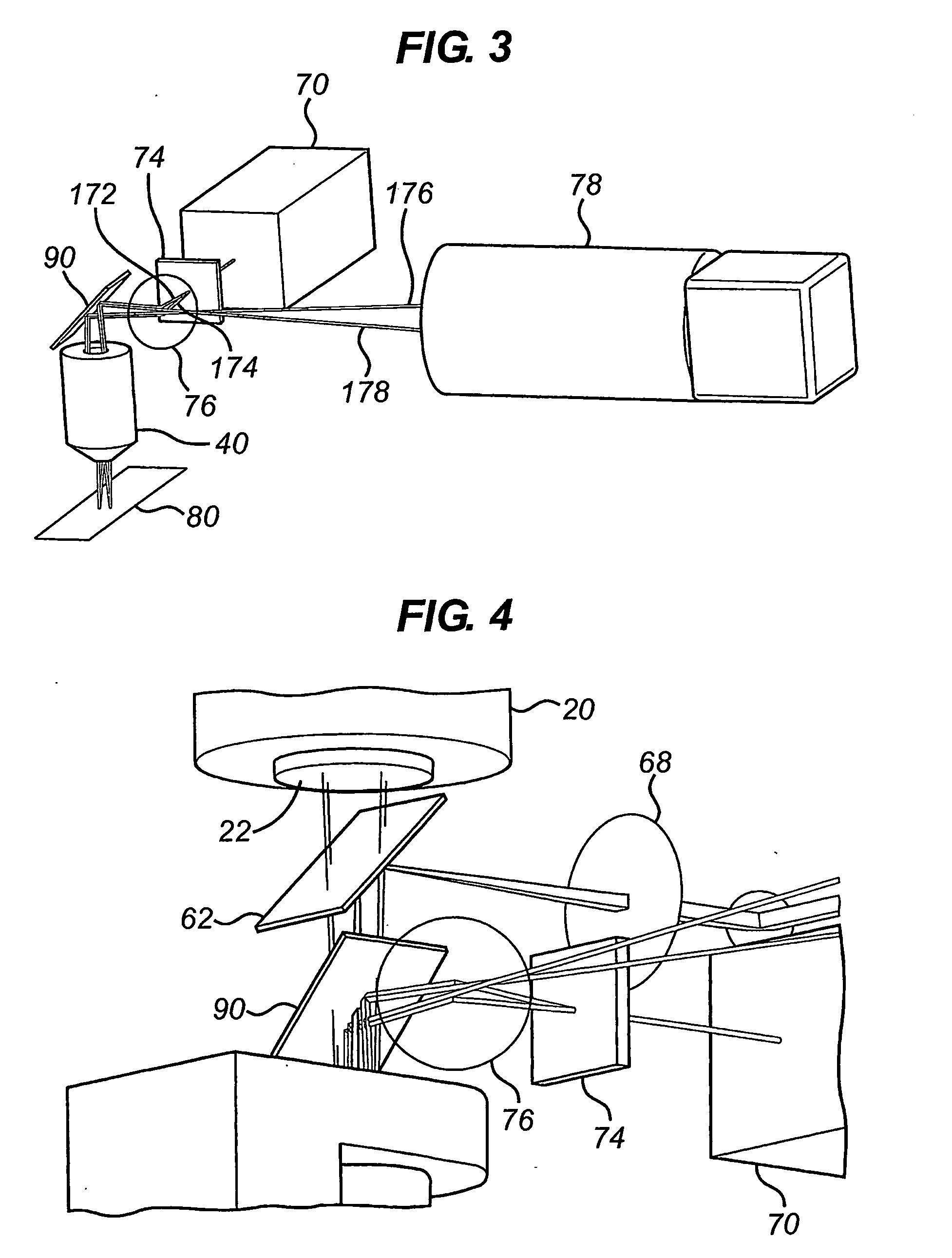Apparatus for imaging single molecules
an apparatus and single-molecule technology, applied in the field of apparatus for single-molecule imaging, can solve the problems of limiting the maximum speed possible, limiting the application of microarray analysis techniques, and few approaches that apply these techniques to microarray analysis, so as to reduce the possibility of unnecessary scan area, reduce the effect of background rejection and finding an area of interest quickly
- Summary
- Abstract
- Description
- Claims
- Application Information
AI Technical Summary
Benefits of technology
Problems solved by technology
Method used
Image
Examples
Embodiment Construction
[0094]FIG. 1 shows the components of a single molecule scanner according to an embodiment of the present invention. In particular, the single molecule scanner of FIG. 1 includes software 10 for image storage, scheduling, image tiling, image processing, and instrument control, an image detection unit 20, a filter unit 30, a dry microscope objective 40, a sample positioning unit 50, excitation components 60, and an auto-focus mechanism 70. The image detection unit 20, the sample positioning unit 50, the excitation components 60 and the auto-focus mechanism 70 are controlled by software 10. Operation of the software 10 for image scheduling is described in co-pending United Kingdom patent application no. GB-0618133.3 which is hereby incorporated by reference. The scanner further comprises a storage unit configured to store the data obtained by the control unit in a non-volatile memory such as a magnetic disk drive.
[0095]As can be seen from FIG. 2, the auto-focus mechanism 70 uses a sepa...
PUM
| Property | Measurement | Unit |
|---|---|---|
| depth of field | aaaaa | aaaaa |
| area | aaaaa | aaaaa |
| thickness | aaaaa | aaaaa |
Abstract
Description
Claims
Application Information
 Login to View More
Login to View More - R&D
- Intellectual Property
- Life Sciences
- Materials
- Tech Scout
- Unparalleled Data Quality
- Higher Quality Content
- 60% Fewer Hallucinations
Browse by: Latest US Patents, China's latest patents, Technical Efficacy Thesaurus, Application Domain, Technology Topic, Popular Technical Reports.
© 2025 PatSnap. All rights reserved.Legal|Privacy policy|Modern Slavery Act Transparency Statement|Sitemap|About US| Contact US: help@patsnap.com



